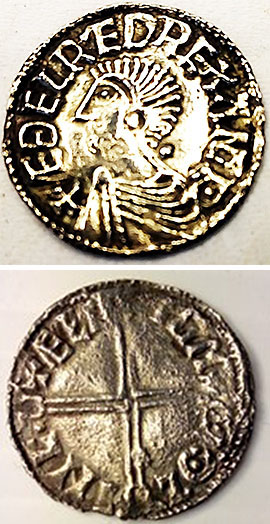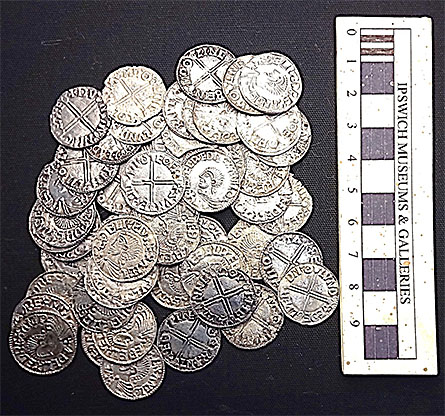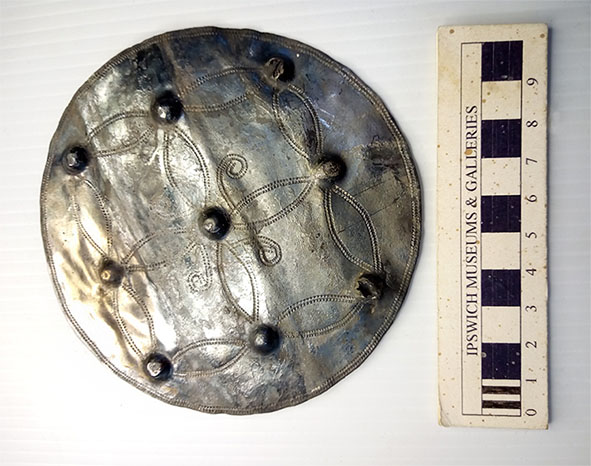- Screen Colours:
- Normal
- Black & Yellow
 I clean rust off weaponry with fine wire wool or emery paper, or tarnish off silver with Autosol silver polish – in this case, coins 1,000 years old picturing Aethelred the Unready, circa AD 997.
I clean rust off weaponry with fine wire wool or emery paper, or tarnish off silver with Autosol silver polish – in this case, coins 1,000 years old picturing Aethelred the Unready, circa AD 997.
After the ‘before’ photo is taken of the coins it is on with the polish and a light rub with cotton wool, then the white spirit, which removes any residue as well as tarnish and dirt and finally on with the Renaissance micro-crystallin wax polish to shine and preserve. Some of the coins had been found sandwiched in a silver brooch of the period, which I cleaned.
My bonus is looking up the history of the objects entrusted to my care. The king’s name, portrait, and royal style on the obverse, were complimented by the name of the moneyer and the mint who had made it along with a Christian design or motif on the reverse.
The design on these coins was known as the Long Cross, which was an adoption of a striking portrait, modelled on a coin type from Imperial Rome, which reflected growing confidence in Aethelred, who had been on the throne since aged 12 in 978.
The Unready bit translates to ‘ill advised.’ After the Battle of Maldon in 991 which the Anglo-Saxons lost, the King was advised by the Archbishop of Canterbury to pay the Vikings 3,300 kg of silver tribute to cease further fighting, with mixed results. “993 This year Anlaf came to Staines with 93 ships and plundered that part of the country; and he went thence to Sandwich and so on to GIPPESWIC and laid all waste”… The beginnings of an eventual shipment of 100 tons of silver.

Above and below: part of the Barsham Hoard after cleaning (Aethelred II long cross type coins: 997 to 1003) and the conserved silver brooch, found in 1986 on Barsham Marshes on the bank of River Waveney [from Suffolk Heritage Explorer].
St Brice’s Day massacre 1002, intended to kill all Danish men living in England, was not a good idea, especially when Gunhilde, the sister of Sweyn Forkbeard, King of the Danes 986-1014, was killed too. Invasion followed in 1003, and continued to cost in lives, property and tributes ‘Danegold’ up to 1013 when Sweyn decided to take the English throne, Aethelred headed to Normandy in exile. Aethelred returned after Sweyn died a year later, having to negotiate his restoration, and died in 1016 – the longest reigning Saxon King. Aethelred was briefly succeeded by his son Edmund but he died after a few months and was replaced by Sweyn’s son, Cnut the Great: King Canute, of the North Sea Empire, a thalassocracy of England, Denmark, and Norway…

Now I must say goodbye to the creaky wooden staircase, vintage posters and the high ceilinged, two-level lab, where everything had its place and purpose – even when not obvious. We had coffee and biscuits on the upper deck by the desks and applied a little tender-loving care to artefacts on the lower deck to light background pop or classical music, with daylight filtering through the dusty windows.
Rowell Bell